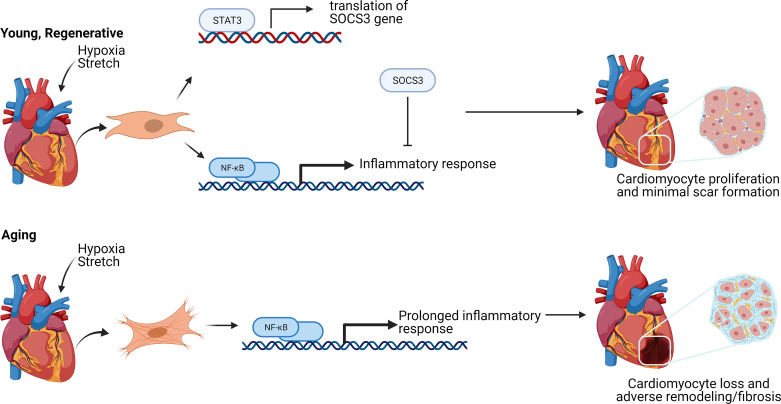Figure 1.
Overview of the NF-κB pathway in young and aging hearts after stress or damage. Both P1, regenerative hearts, and P8, nonregenerative hearts, express NF-κB immediately after myocardial infraction (MI). Neonate P1 hearts trigger the signal transducer and activator of transcription 3 (STAT3) pathway, resulting in the expression of suppressor of cytokine signaling 3 (SOCS3). SOCS3 inhibits the activity of NF-κB, stopping the inflammatory pathway prematurely and resulting in minimal scar formation. Aging hearts experience a prolonged NF-κB response leading to more fibrosis after damage. Created with BioRender.com and published with permission.

